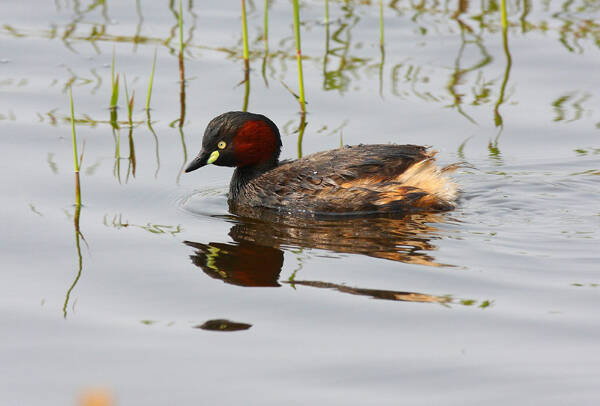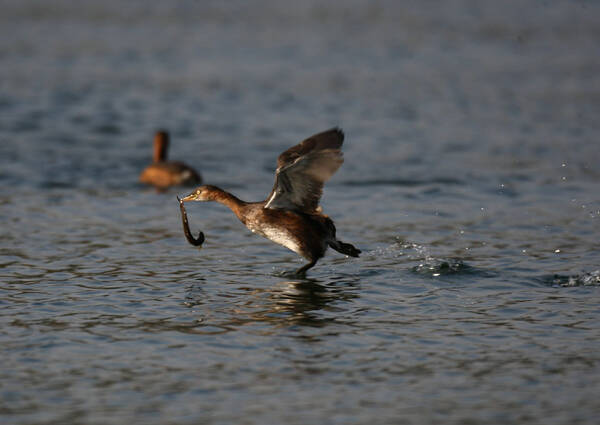Tachybaptus ruficollis
IUCN
LCBasic Information
Scientific classification
- name:Tachybaptus ruficollis
- Scientific Name:Tachybaptus ruficollis,Oil duck, water hyacinth, oil gourd, turtle duck
- Outline:Waterfowl
- Family:order family genus
Vital signs
- length:
- Weight:
- lifetime:
Feature
It has yellow eyes and is proficient in swimming and diving.
Distribution and Habitat
It is a summer migratory bird and traveling bird in Northeast, Northwest and North China, and a winter migratory bird in the southern region. It is widely distributed in Eurasia, Africa, Southeast Asia and South Asia.
The little grebe is a diurnal bird. Except for the breeding period, it usually rests in the grass beside hidden ponds or lakes at night. It nests in swamps, ponds, lakes, reeds, rushes, cattails and other places, mostly in small water surfaces in mountains. If the place where it lives freezes in winter, it will move to a warmer seaside or a larger lake that does not freeze.
Appearance
The smallest grebe. During the breeding season, the top of the head and upper body of the adult bird are dark brown, the cheeks, sides of the neck and front neck are chestnut red, the rest of the lower body and chest are grayish white, and the front of the eyes and the beak are milky white. In winter, the top of the head and upper body are grayish brown, and the cheeks, sides of the neck, front neck and the rest of the body are grayish white. The iris is yellow, the beak is black with a yellow tip, and the feet are slate gray.
Details
The small grebe (pì) is a species of the genus Small grebe of the family Gruidae. Because of its short and round body shape, it floats on the water like a gourd, so it is also called water hyacinth. It breeds and hibernates in slow-flowing lakes, ponds, swamps and rivers, often moving alone or in pairs. It often dives frequently when hunting, and the upper part of its body is exposed above the water when swimming, so it needs to run on the water surface to take off.

Food: mainly small fish, occasionally small shrimps or small arthropods in the water.
Habitat: nests in swamps, ponds, lakes, reeds, rushes, cattails, etc., mostly in small mountain waters
Inhabits lakes, ponds, rivers, etc. The food is mainly small fish, shrimps, insects, etc. They wander alone or in small groups on the water, are good at diving, and dive into the water immediately when disturbed. They build nests on the water surface among aquatic plants.

They are timid, often hiding in the grass, or wandering in groups on the water, rarely going ashore, and immediately diving into the water when disturbed.
They like open waters and lakes, swamps, and paddy fields with many aquatic organisms. They often move alone or in small groups, chasing and chirping on the water surface during the breeding season. They are good at swimming and diving, and they also hunt by wading. They rarely fly. When frightened, they will flap their wings quickly and fly short distances close to the water surface.

During the breeding season, they build floating nests with water plants in hidden places such as reeds. When they find people or predators coming near the nest, they will cover the eggs in the nest with weeds to prevent them from being discovered by predators. There are 4 to 8 eggs in a nest, and the hatched birds are sometimes carried on the backs of their parents. The young birds have distinct black and white stripes on their heads. Before they learn to dive, they mainly rely on adult birds to provide food such as small fish and aquatic insects. Young grebes are vulnerable to attacks by night herons and large carnivorous fish.








